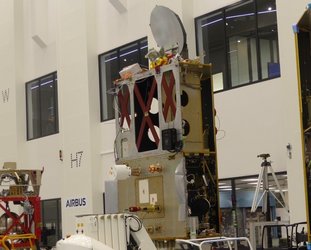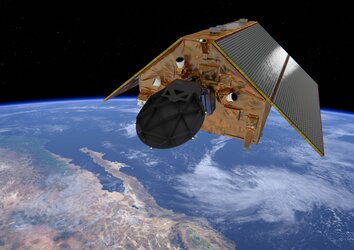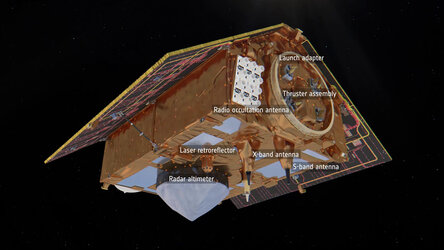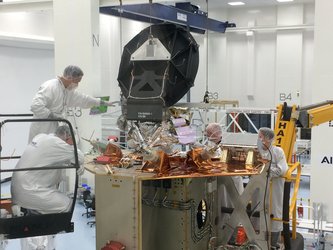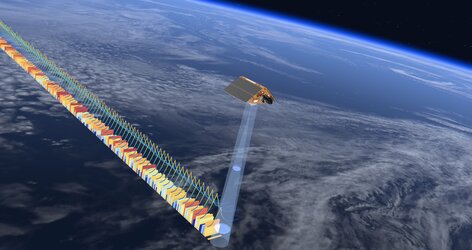
Inside Copernicus Sentinel-6
The Copernicus Sentinel-6 mission builds on heritage from the French–US Jason series, ESA’s CryoSat and the Copernicus Sentinel-3 missions. Developed by ESA, the main instrument is the Poseidon-4 dual-frequency (C-band and Ku-band) radar altimeter. It improves on precision and stability of the radar altimeters on the Jason series and also inherits a high-resolution synthetic aperture radar mode from CryoSat and Copernicus Sentinel-3, but with a design that allows synthetic aperture radar and low-resolution modes to deliver data simultaneously.
An advanced microwave radiometer, provided by NASA, supports Poseidon-4. Water vapour in the atmosphere affects the speed of the altimeter’s radar pulses – and therefore estimates of sea-surface height. The advanced microwave radiometer accounts this water vapour to ensure that measurements are accurate.
The satellites also carry a precise orbit determination package, including a GPS receiver and a laser retroreflector.


